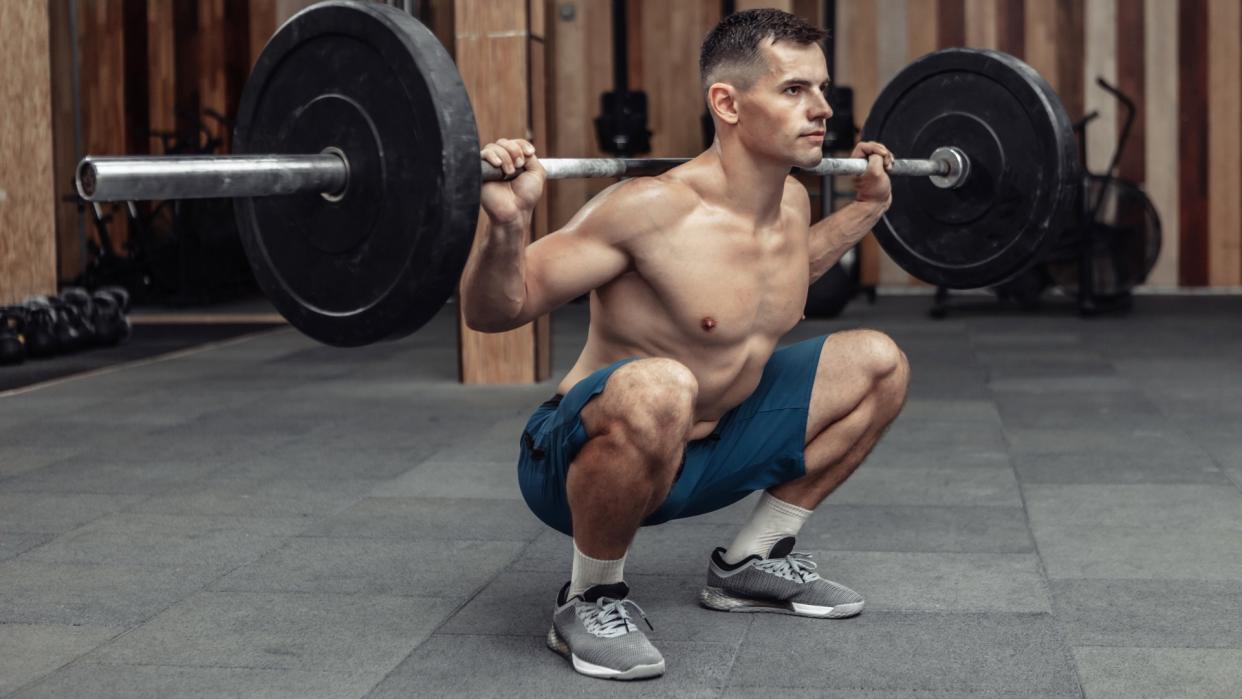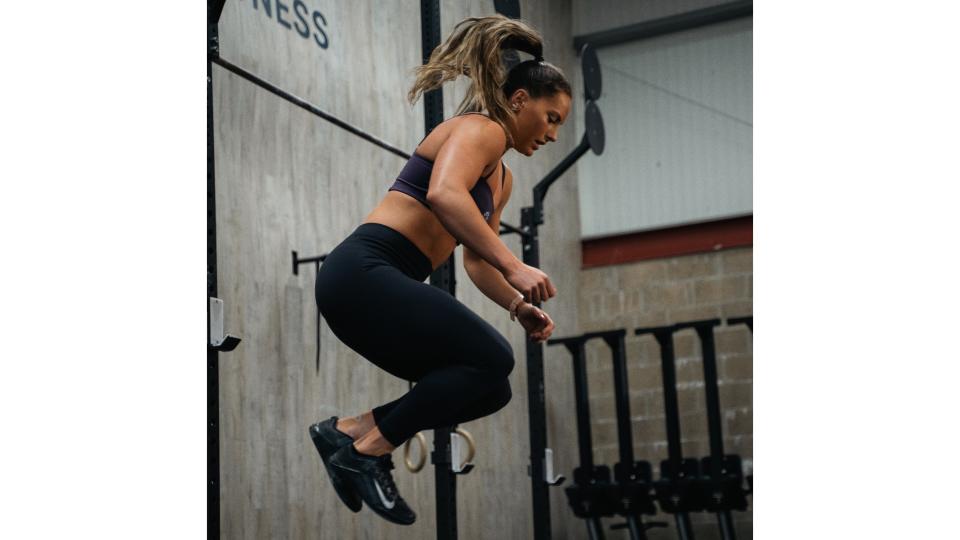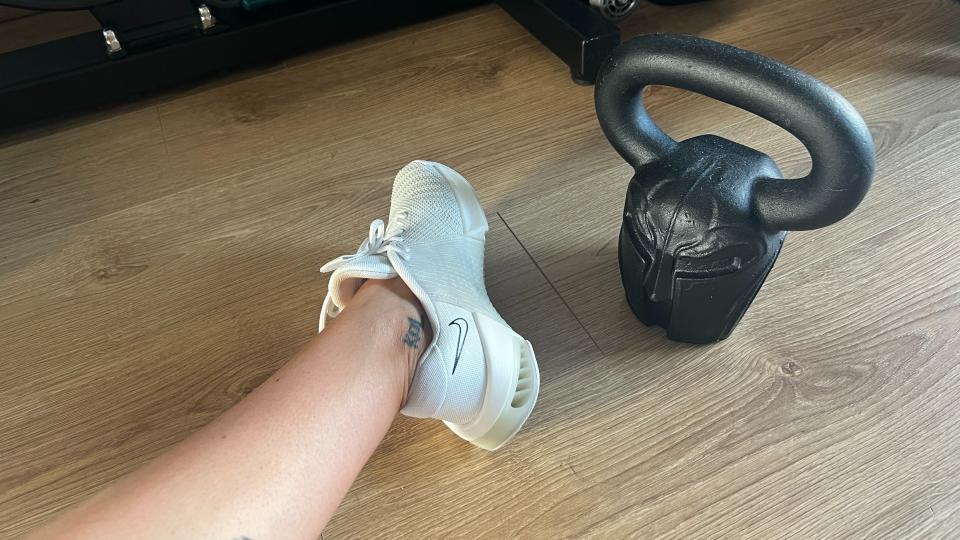I’m a personal trainer — and this is the biggest workout mistake I see in the gym

Step into the gym, and you’ll notice all sorts of things going on — but have you looked down? I’m talking about what’s on your feet. One of the biggest gym mistakes I see during workouts is simple — the wrong workout shoe.
Whether you’re a CrossFit athlete, starting a new strength program or an avid runner — what you wear on your feet matters. And sure, there are many common gym mistakes, from improper form to lifting too heavy too soon, but your training shoes could seriously hamper your exercise efforts.
I’m no running expert (my editor has that covered), but I know what to look for with cross training and weightlifting. Here’s what to look for from your lifting shoes and why it matters.
Shoes for gym and running: Does it matter?
You might think slipping on a pair of the best running shoes to lift heavy weights is fine, but it’s a no-no. Too much cushioning and a lack of specific construction are a weightlifter’s worst nightmare.
Think of the cloud-like foam of the Asics Gel-Nimus 25 — they’re the last shoe you’d wear to wield a heavy barbell. Your shoe should maximize energy transfer and proffer stability as you generate force. Super bouncy running shoes are more likely to create ankle instability and dampen your weightlifting efforts.
The key to stability during technical lifts is a reliable foot-ground connection, hence why some lifters prefer to go barefoot while others love to tie up a pair of Vans or classic Converse Hi Tops.
So while choosing the cross training shoes or weightlifting shoes (nope, they’re not the same) is a personal preference, there are a few key factors to consider.
Cross training shoes vs weightlifting shoes
Cross training shoes like the infamous Nike MetCon range are designed to be multi-functional and constructed to suit a range of activities like rope climbs, short runs, lifts and plyometric training. The overall benefit of cross training shoes is simple — versatility.
For example, if you plan to tackle a Murph workout or the best CrossFit workouts, moving from one activity to another quickly, cross training shoes could be the best fit for you. The upper and outsoles are also built for stability, so you can still lift in them and move straight to burpees and box jumps should you want to.
Weightlifting shoes are constructed specifically for lifting, meaning you’d do little else in them. These shoes house an elevated heel, a wider toe box and rigid outsoles for stability; that rigidity doesn’t transfer well to sports like running, when you need flexibility through the foot to strike the ground. And that’s also why you don’t turn up at the gym ready to hit a deadlift PB wearing Asics.
When attempting snatches, clean and jerks or other complex moves, you’ll adopt a specific movement pattern, and your shoe will need to meet those requirements to maximize power output, efficiency and performance. Let’s look at some specifics.
Barefoot training
The heel-to-toe drop (or heel elevation) you prefer depends on your anatomy and the move you’re doing.
Barefoot shoes, barefoot training, Vans and Converse are popular if you want zero drop — a flat foot. Shorter people or those with excellent mobility may prefer this method, and many lifters report feeling “more connected” with the ground during squats.
Cross training shoes

Cross training shoes have more of a drop, meaning an elevated heel, and stable midsole and outsole construction. These shoes sit somewhere between weightlifting and barefoot shoes, which is why they’re so versatile and suit a range of exercises found in functional training. They’re similar to weightlifting shoes but maintain more flexibility, suited for mixing up activities and work better for those who find flat-footed training limits their mobility and range of motion.
Weightlifting shoes
Weightlifting shoes support two things: anatomical positioning and performance. During Olympic lifts (think squats, snatches or cleans, for example), the higher heel-to-toe drop (much higher elevated heel) supports proper mechanics and stability for powerlifting.
The foot positioning improves dorsiflexion and assists lifters in driving the knee further forward (helpful for taller lifters and those with long femurs) and encourages an upright torso position, which can improve your overall mobility. Lifters can also sit lower at the bottom of a squat and find more range during lifts.
An elevated heel is also useful if you prefer a quad bias. But unless you’re engaging in the sport of weightlifting (Olympic lifting), you’re unlikely to benefit from wearing them. They don’t exactly scream comfort — the wider toe box and aggressively rigid outsoles promote toe splay and ground connection but with little flexibility, so if you enjoy CrossFit or HIIT classes, these guys won’t cut it.
A compromise you could make is carrying a pair for the strength portion of your workout, then switching over to a cross training shoe for your accessory lifts or WOD.
What are the best shoes for weightlifting?
If you’ve determined that you'll be focusing on Olympic lifting and you need weightlifting shoes to support your training efforts, the Nike Romaleos 4 are hugely popular, as are the NOBULL Lifter and Adidas Powerlift series as a jumping off point.
If you haven't already formed a bias, we recommend trying several pairs and seeing what feels best for you.

What are the best cross training shoes?
We’ve rounded up the best cross training shoes on the market to help you choose which shoes are right for you. Our favorite picks for versatility are the Hylete Circuit II or the Vivobarefoot range if you prefer a barefoot feeling while you lift.
I train in the Nike Metcon 9 and wouldn’t wear any other shoe during CrossFit classes (until they release a new pair, perhaps). They’re not Nike’s grippiest, but they’re miles comfier than the 8 and still offer brilliant stability during weightlifting with a pronounced rope guard for tackling climbs. And NOBULL is hugely popular amongst CrossFitters too.

Verdict
Wearing unsuitable shoes for workouts doesn't come down to laziness. Many people simply aren't sure what should go on their feet and when. My best advice is to consider your workout and tailor accordingly.
If you're a runner, you'll already be aware that running shoes are the best training shoe for you. If you like to do a bit of everything, save yourself some money and stick to a pair of reliable cross training shoes. And if you only hit the Olympic lifts during gym time, a pair of weightlifting shoes could be for you.
Now, the next time you hit the gym — look down at your shoes, and if you’re about to lift weights in running shoes — take them off!
